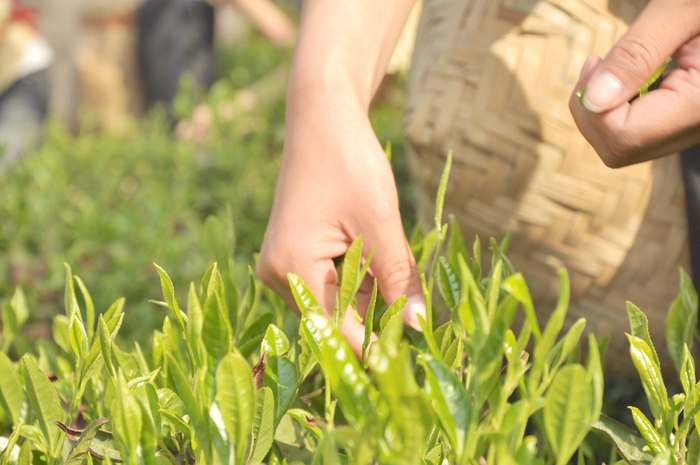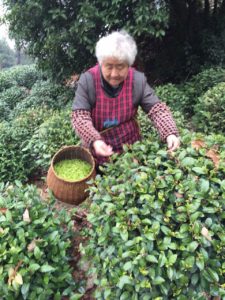
Element 5 – Harvest Date
When was this tea plucked? The answer to this simple question tells us many things, not the least of which include:
- The expected quality of a tea’s flavor
- The tea’s cultural value
- The authenticity of the product
- The likelihood that the tea has been well-cared for and not contaminated during production.
As far back as the Tang Dynasty in China, the first tea harvested of the year had the greatest value. The reasons for this were largely cultural; the first tea coming from Sichuan on a hard road or Zhejiang across the central plains raced to the imperial court before Qingming, where the emperor would make it an offering to the imperial ancestors at the temple of heaven. The first to arrive was always the best just for being first.
 Spring tea still commands the highest prices with a reputation for having a desirable flavor. The reason’s for spring-gown tea’s distinct flavor relates to the chemistry within the leaves as the tea bush emerges from winter dormancy and reacts to the season’s cooler temperature. The dormancy causes nutrients to concentrate for the growth of new leaves. It is also during this time that newly growing tea leaves will remain small because of limited periods of sunshine, cool air temperature, and foggy hillsides.The earliest flushes do not produce much tea, so rarity is a factor in spring tea’s value as well.
Spring tea still commands the highest prices with a reputation for having a desirable flavor. The reason’s for spring-gown tea’s distinct flavor relates to the chemistry within the leaves as the tea bush emerges from winter dormancy and reacts to the season’s cooler temperature. The dormancy causes nutrients to concentrate for the growth of new leaves. It is also during this time that newly growing tea leaves will remain small because of limited periods of sunshine, cool air temperature, and foggy hillsides.The earliest flushes do not produce much tea, so rarity is a factor in spring tea’s value as well.
In contrast to the first tea of the year, tea that is grown in the summer is prone to extensive insect damage without the use of pesticides and lacks complexity and the sweetness of amino acids that are concentrated in spring grown tea. In many regions, summer tea is never plucked because the quality of the final product is so low. Where summer tea is made, one often sees that less care is invested in its production by tea makers out of knowledge that the tea’s inferior flavor will fetch lower prices at market and will not justify the extra expenses of finer plucking and production. This is especially true in China.
Many quality teas have a short window of time to be picked. Missing this time is a disaster for the year’s crop. Sometimes this window can be dramatically affected by weather. For example, Anji Bai Cha, a tea sweet with amino acids in the cold early spring, shows a distinctive yellow color during the first weeks of spring. Once the air temperature rises above 25 degrees celsius (77 fahrenheit) the bush’s leaves turn green and lose their distinct chemistry. A similarly temperamental cultivar, Bai Ji Guan, has just a 4 day picking window — leaves from the first two days are distinctly different from the last two. Several days of rain during this time would have disastrous effects.
It may be that adding information about the weather at harvest time could add a more detailed and interesting perspective on harvest decisions and the ultimate flavor of the tea.
